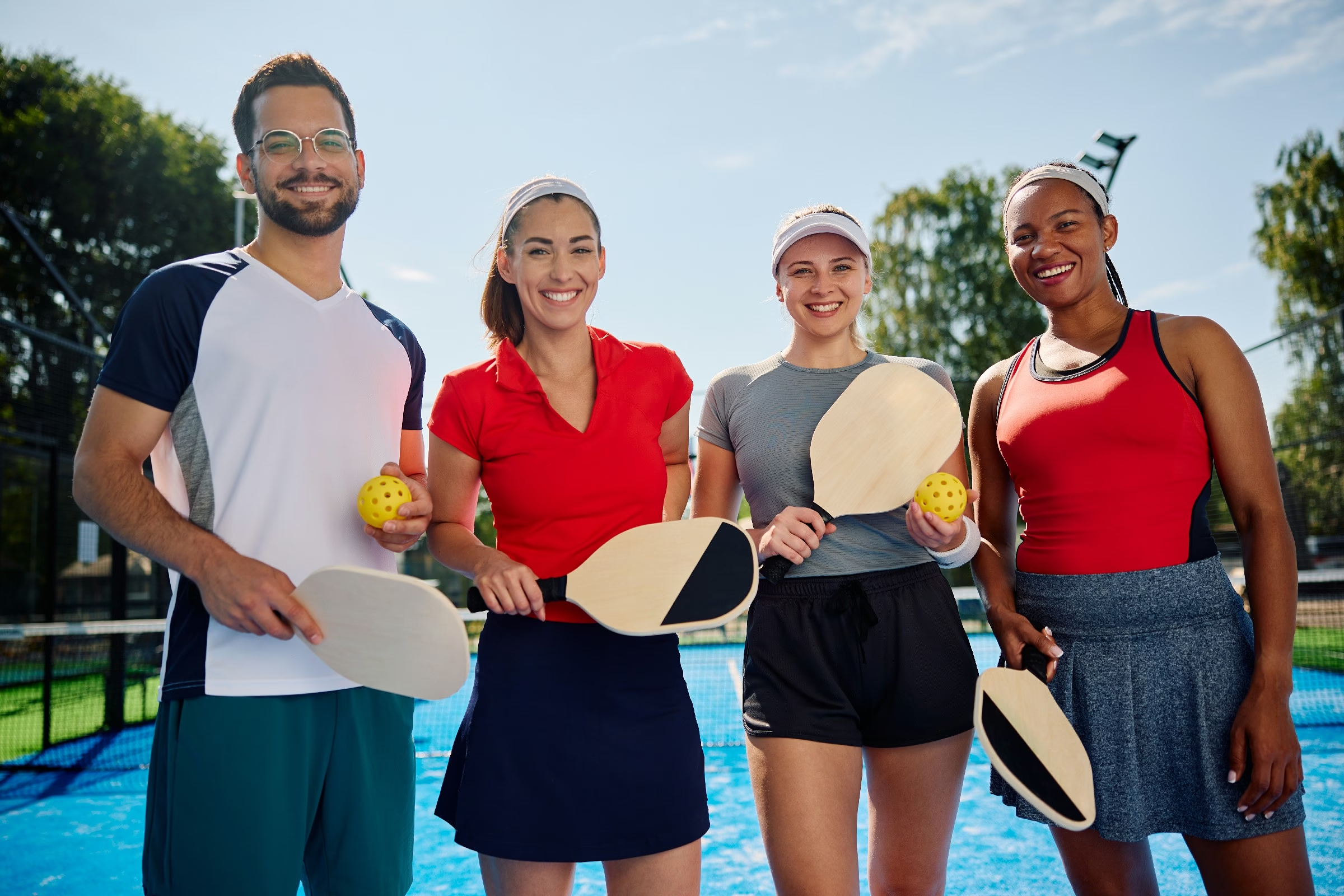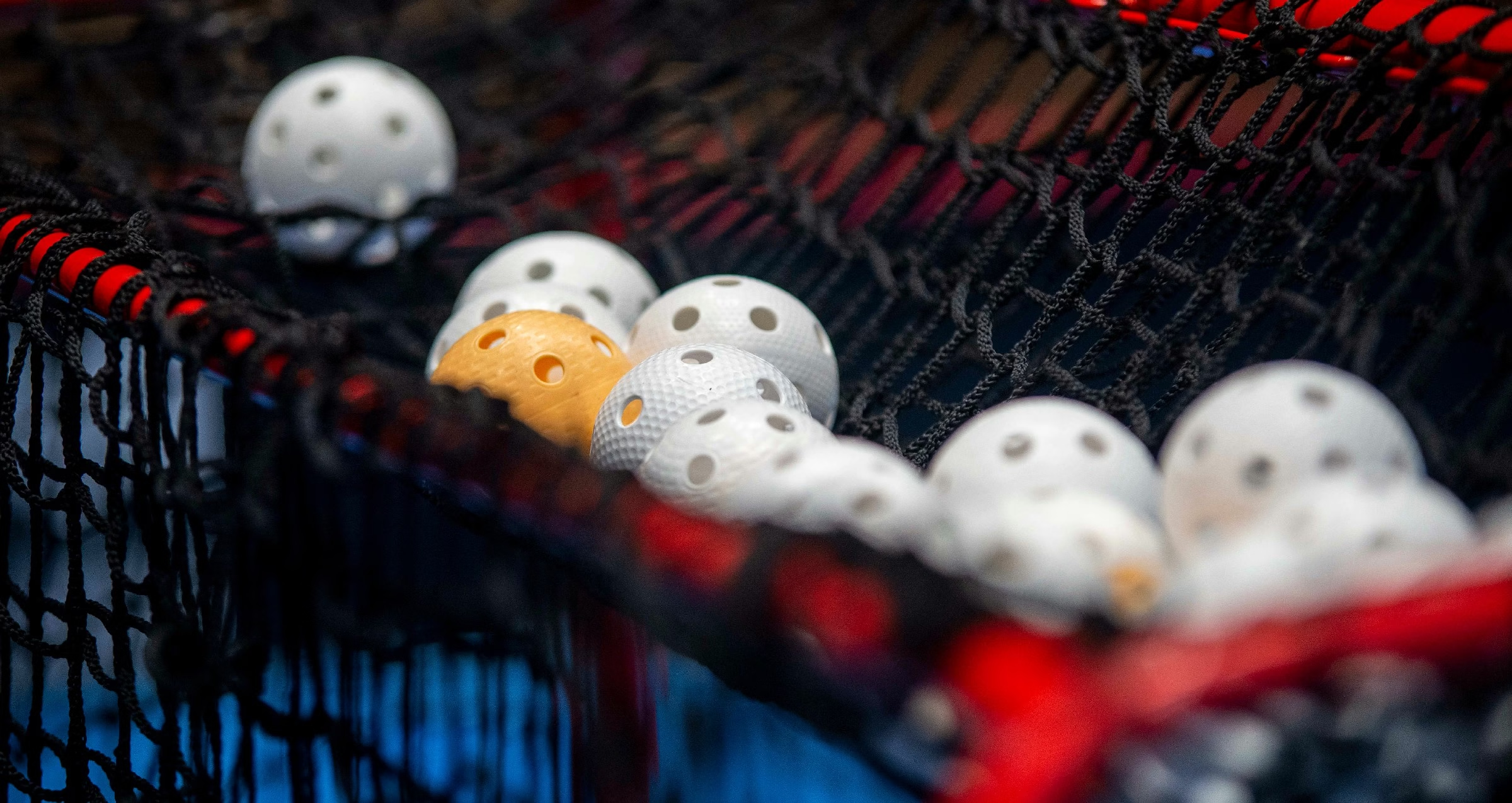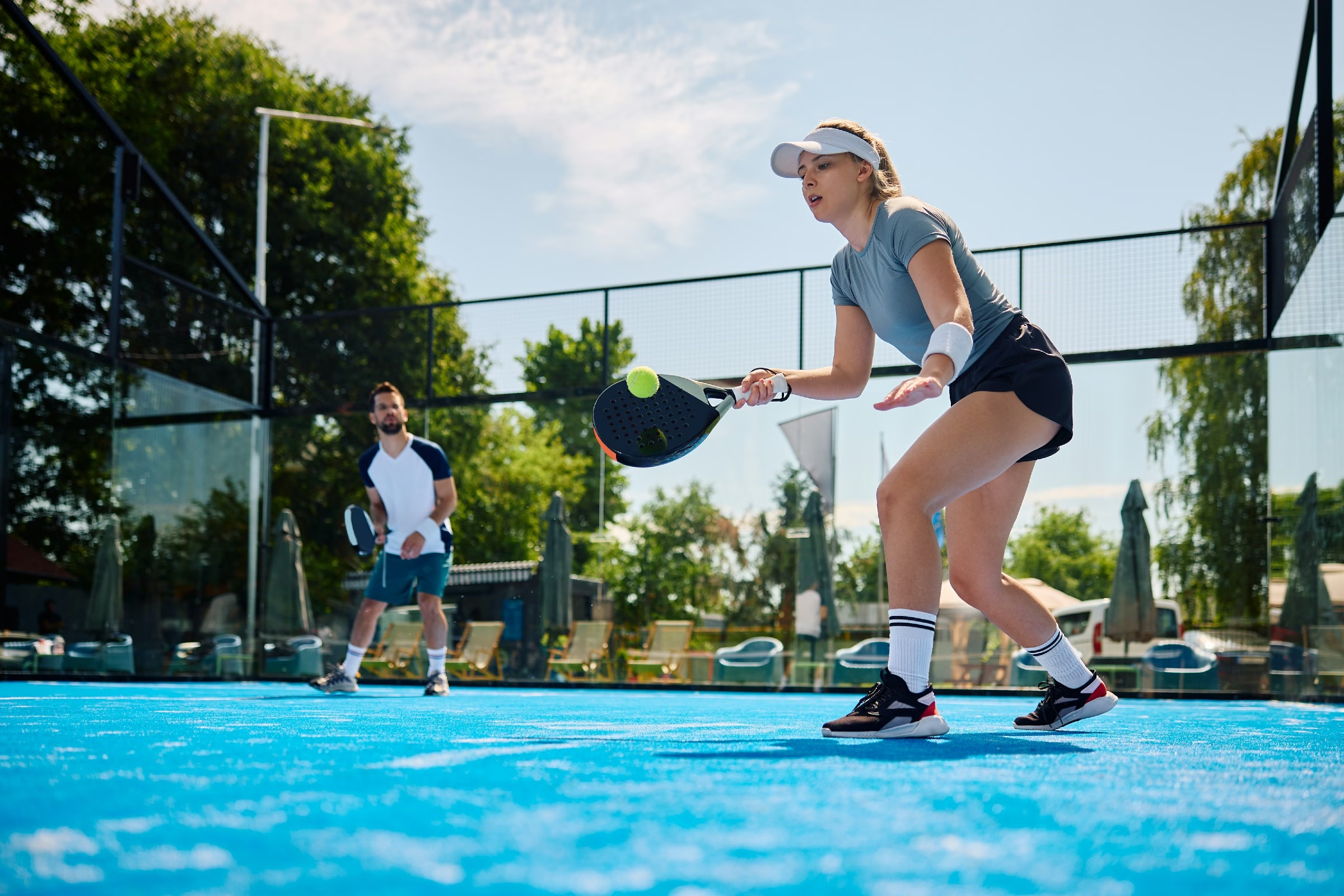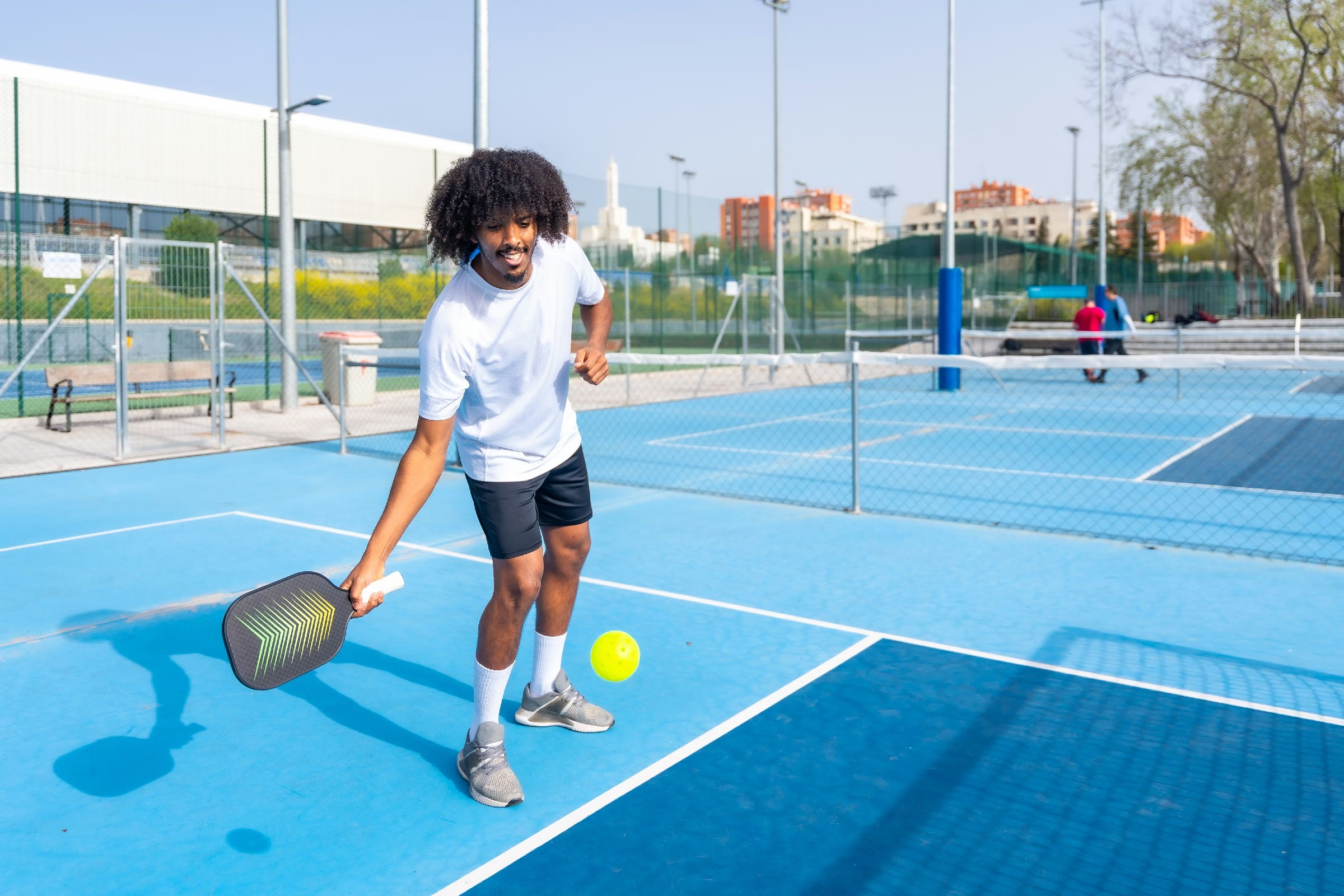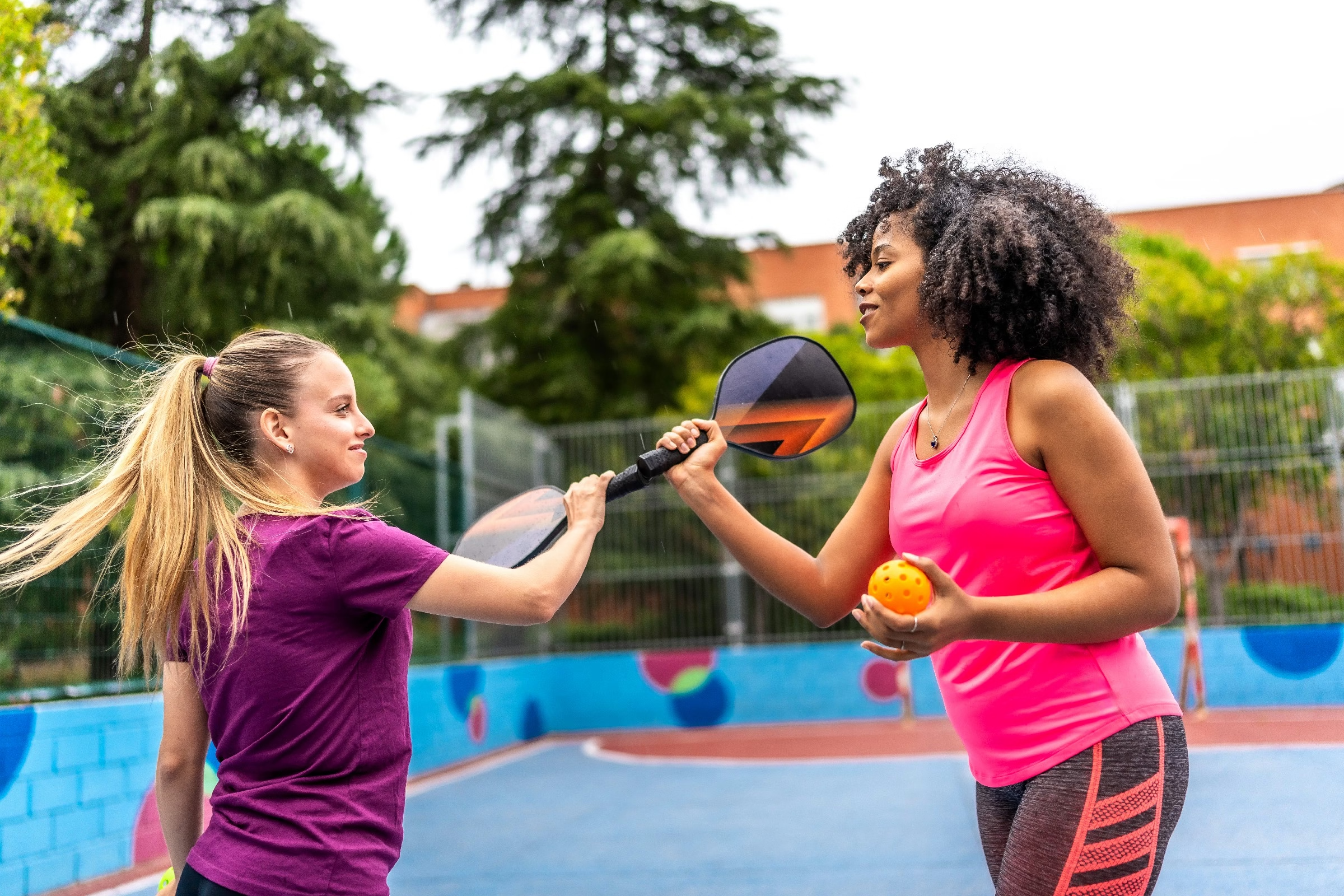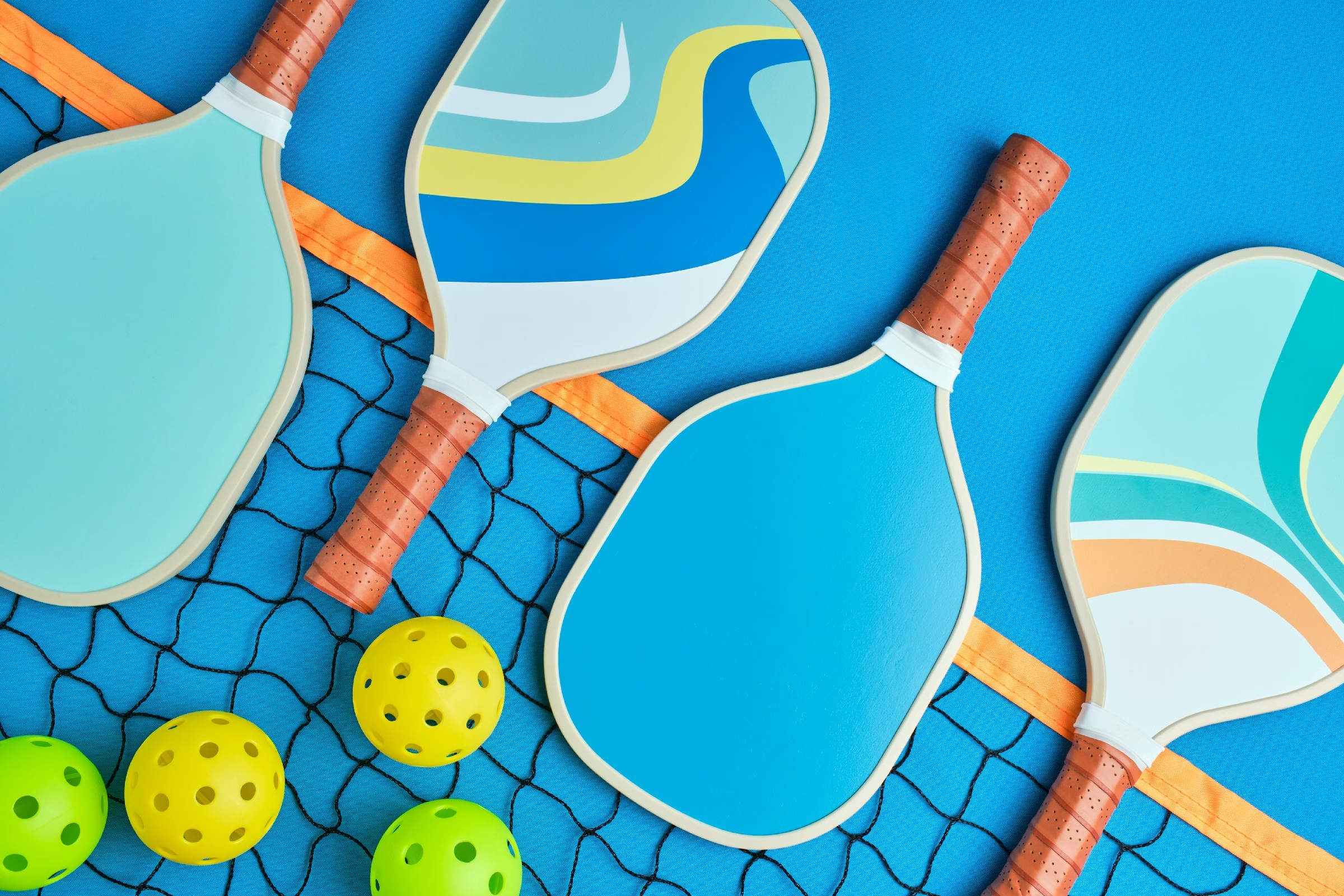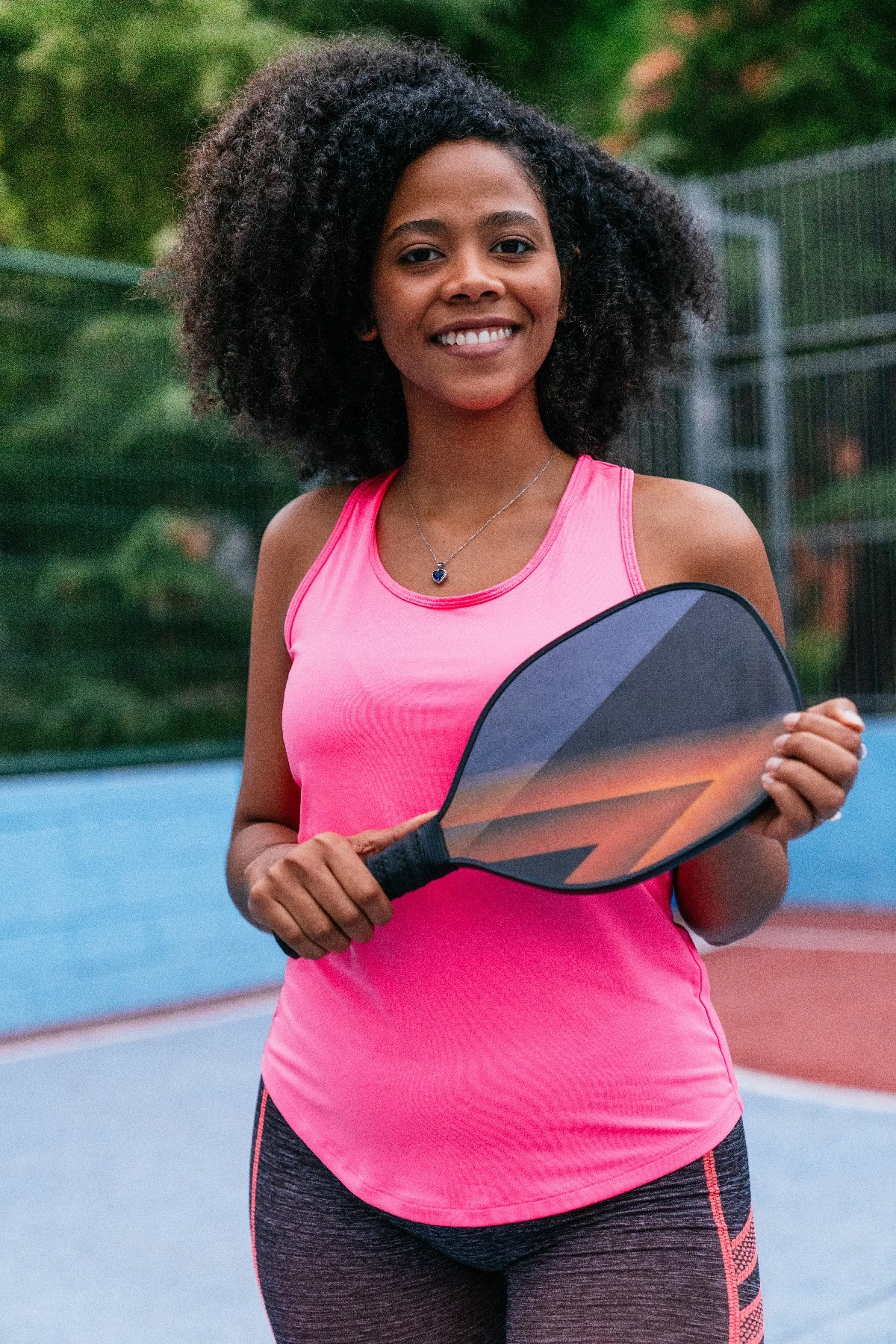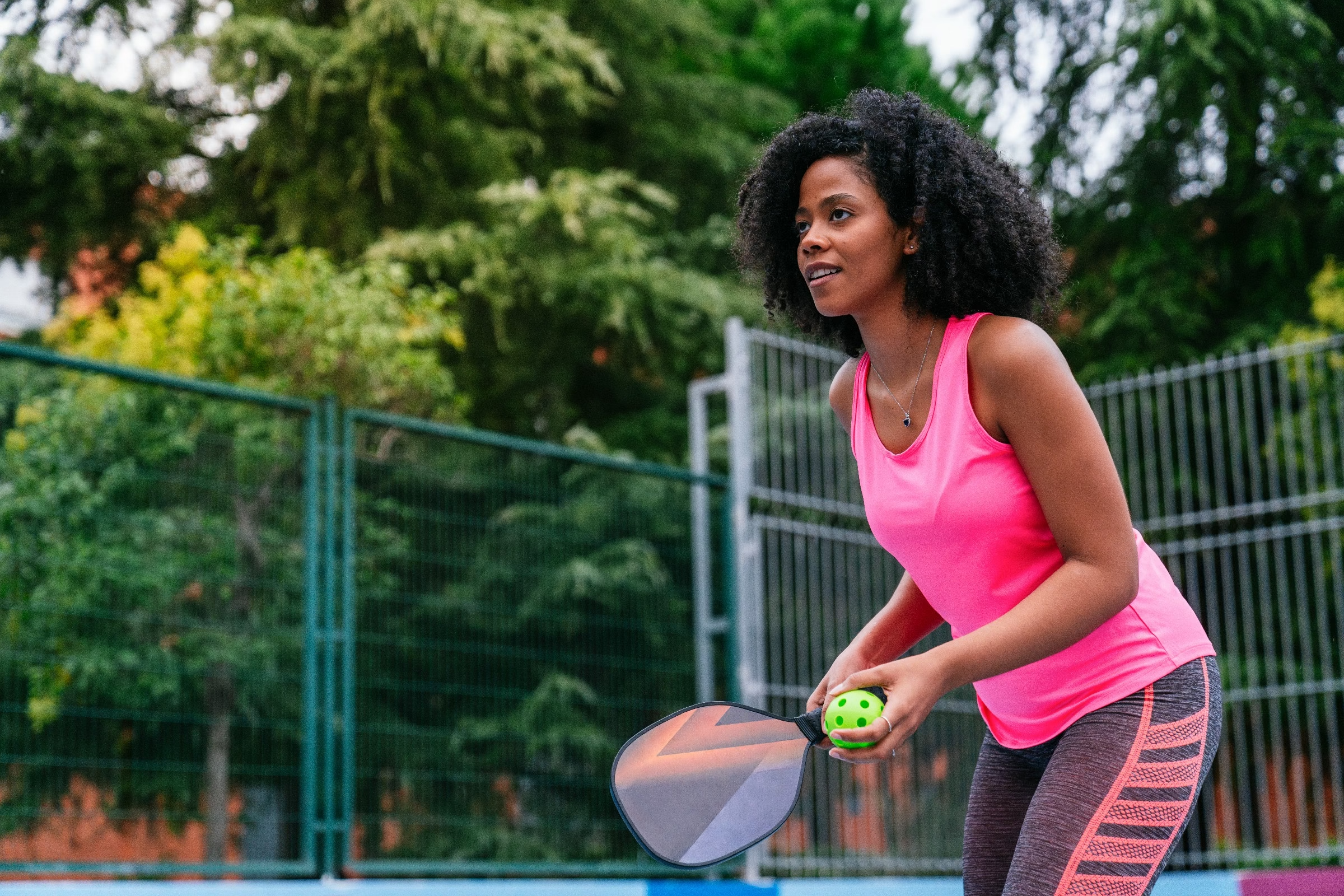Blog
how to choose a pickleball paddle for intermediate players

Navigating the Court: A guide to Choosing the Perfect Pickleball Paddle for Intermediate Players
As the sun casts long shadows on the polished wooden courts and the rhythmic sound of paddles colliding with vibrant yellow balls fills the air, the sport of pickleball continues to capture the hearts of both seasoned athletes and newcomers alike. For intermediate players standing at the precipice of skill advancement, selecting the right pickleball paddle is not just a practical decision; it’s a key factor that can enhance performance and elevate the overall enjoyment of the game. With so many options available, it can be daunting to navigate the myriad of paddles on the market. This guide unpacks the essential features and considerations, empowering players to make informed choices that align with their playing style and aspirations.Embrace your next level of play with confidence as we explore how to find the paddle that feels like an extension of your arm on the court.
Table of Contents
- Understanding Paddle Materials and Their Impact on Performance
- Finding the Right Weight: Balancing Control and Power
- Grip Size Matters: Ensuring Comfort and Reducing Injury Risk
- Core Construction: Exploring Different Paddle Interiors
- Shape and Design: Optimizing Your Playing style
- Price vs. Quality: Making a Smart Investment in Your Game
- Q&A
- In Conclusion
Understanding Paddle Materials and Their Impact on Performance
When selecting a pickleball paddle, the material composition is crucial as it considerably influences your game performance. Different materials boast various properties such as weight, responsiveness, and durability, all of which are paramount for intermediate players seeking to enhance their skills. The most common materials used in paddles include:
- Wood: Generally heavier and less costly, wood paddles are robust but may limit control.
- Composite: Thes paddles blend different materials for a balance of weight and performance, often preferred for added spin.
- Graphite: known for lightweight and strong designs, graphite paddles provide excellent touch and maneuverability.
Another essential aspect to consider is the core material of the paddle, which directly affects how it performs in various conditions. Core options typically include:
| Core Material | Characteristics |
|---|---|
| Polymer | Offers a quiet hit with good control and durability, ideal for longer rallies. |
| nomex | Provides a firmer feel with a higher energy transfer, boosting power but potentially sacrificing some control. |
| Aluminum | Frequently enough less common,aluminum cores deliver exceptional touch but can be heavier than polymer options. |
understanding the interplay of paddle materials, along with core options, is vital in the pursuit of improved performance. Evaluating how these elements contribute to your playstyle can definitely help you make informed choices that align with your goals as an intermediate player.As you progress, experimenting with different materials may also enhance your comfort on the court and refine your technique.
finding the Right Weight: Balancing Control and Power
When selecting the weight of your pickleball paddle, it’s crucial to consider not only your playing style but also your physical capabilities.A lighter paddle generally offers better control, allowing for precision shots and quick reactions at the net. these paddles typically weigh between 6.5 to 7.5 ounces. On the other hand, heavier paddles, which range from 7.5 to 8.5 ounces, can provide more power on serves and groundstrokes, helping intermediate players generate the speed needed for competitive play. Striking the right balance between control and power is the key to enhancing your overall game.
Another vital aspect to think about is how the paddle’s weight affects your stamina during matches. Lighter paddles might feel less taxing during long rallies, enabling you to maintain consistent performance without feeling fatigued. Conversely,opting for a heavier paddle could mean sacrificing some agility,leading to quicker exhaustion during extended games.This trade-off requires careful thought, notably for players who partake in tournaments or lengthy matches, where endurance plays a pivotal role.
| Paddle Weight range | Control Level | Power Level |
|---|---|---|
| 6.5 – 7.5 oz | High | Medium |
| 7.5 – 8.5 oz | Medium | High |
| 8.5+ oz | Low | Very High |
Grip Size Matters: Ensuring Comfort and Reducing Injury Risk
When selecting a pickleball paddle, the grip size is a crucial element that often gets overlooked. An improper grip can lead to discomfort during prolonged play and may also increase the risk of injury. The right grip size allows for a natural wrist movement and better control, enabling players to execute their shots with precision.To determine the best grip size for you, consider the following factors:
- Finger Measurement: Hold the paddle as you normally would, and extend your fingers around the grip. If the tips of your fingers just touch the base of your thumb, you’ve found an ideal size.
- Grip Comfort: Ensure that your grip feels snug but not overly tight, allowing for agreeable maneuverability.
- Test Different Sizes: Visit a sports store where you can try various paddle grips and find the one that feels most natural to your hand.
For those who may be uncertain of their ideal grip size, it’s essential to note that grip sizes typically range from small (4 inches) to large (4 ½ inches).The right fit not only contributes to better performance but also reduces fatigue in your hands and wrists. Here’s a simple table to help you visualize the common grip sizes and corresponding player hand sizes:
| Grip Size | Hand Size (Circumference) | Recommended Player Level |
|---|---|---|
| Small | 4 inches | Beginner to Intermediate |
| Medium | 4 ¼ inches | Intermediate |
| Large | 4 ½ inches | Advanced |
additionally, players should be aware of the impact that temperature and humidity can have on grip size. Sweaty hands can make a smaller grip feel slippery, leading you to overcompensate by gripping too tightly. This may cause strain and discomfort over time. To combat this, consider using grip-enhancing products such as gloves or towels during play. Remember, the goal is to find a balance between comfort and control, which will ultimately enhance your overall gameplay experience.
Core Construction: Exploring different Paddle Interiors
When selecting a pickleball paddle, one of the most critical factors to consider is the paddle’s core construction. Different paddles utilize a variety of materials that greatly influence gameplay. The core of a pickleball paddle can significantly affect its weight, durability, and overall performance on the court. Here are some of the common core materials to explore:
- Polymer: Known for its quiet play and excellent ball control, polymer cores are perfect for intermediate players looking to hone their skills.
- Nomex: This material offers a harder surface that generates a pop during contact, making it ideal for players who prefer power in their shots.
- Aluminum: While less common, aluminum cores provide a unique feel and a blend of control and power that some players might favor.
The choice of core material also dictates the weight distribution and balance of the paddle,which can affect the player’s swing and maneuverability. such as, a polymer core provides a more forgiving touch that may help in finesse shots, while a harder core like Nomex can add more weight to the paddle, catering to aggressive play styles. It’s essential for intermediate players to consider their playing style and preferences when deciding.
| Core Material | Advantages | Ideal For |
|---|---|---|
| Polymer | Quiet, good control | Precision players |
| Nomex | Powerful pop, durability | Aggressive players |
| Aluminum | Unique feel, balance | Hybrid style players |
Ultimately, understanding how different core materials affect paddle performance can guide intermediate players in making their selection. It’s recommended to try out paddles with varying core compositions to see which one complements your playing style the best. Feedback from other players, personal experiences during matches, and even professional reviews can provide valuable insights into which core might be a game-changer for you.
Shape and Design: Optimizing Your playing Style
When selecting a pickleball paddle, the shape and design play a crucial role in enhancing your playing style. standard shapes are the most common, offering a balanced blend of power and control. Alternatively,elongated and wide-body paddles cater to different preferences; elongated designs are great for reach and maximizing power,while wide-body paddles provide a larger sweet spot and increased stability,ideal for players who prioritize consistency and control.
Another critically important aspect to consider is the paddle thickness. Thicker paddles generally provide a sturdier feel and can absorb impact more effectively, translating to increased durability. Though, thinner paddles frequently enough allow for faster maneuverability, lending themselves to more agile play styles. Understanding your typical game rhythm can assist you in choosing the right thickness that complements your strengths.
Lastly, the grip size and texture can significantly impact your performance. A grip that feels too small or too large can hinder your control, leading to mistakes. It’s advisable to test different sizes to find the one that feels natural in your hands, enhancing comfort during long matches. Additionally, opting for paddles with textured surfaces can help grip the ball better, allowing for sharper spins and more precise shots.
Price vs. Quality: Making a smart Investment in Your Game
When selecting a pickleball paddle, balancing price and quality is crucial for intermediate players looking to enhance their game. It’s easy to get captivated by lower-priced options, but investing a little more in a quality paddle can yield notable benefits. A well-constructed paddle will offer better control, a larger sweet spot, and improved durability, all of which are essential for refining your skills on the court.
Consider factors that influence both quality and pricing, such as material and technology. A paddle made from premium materials, like graphite or composite blends, generally provides superior performance.Here’s a brief overview of different materials and their characteristics:
| Material | Pros | Cons |
|---|---|---|
| Wood | Cost-effective, sturdy | heavier, less control |
| Composite | Lightweight, good power | can be pricier |
| Graphite | Great feel, advanced technology | May chip or crack |
Furthermore, it’s important to keep in mind that brand reputation often reflects the quality you can expect. Trusted brands invest in research and progress to provide innovative features such as ergonomic handles and vibration-dampening technology. This means opting for a paddle from a reputable manufacturer might save you from future disappointments and unnecessary replacements. a thoughtful approach towards pricing and quality ensures that your investment in a paddle not only enhances your playing experience but also supports your progression as an intermediate player.
Q&A
Q&A: How to Choose a Pickleball Paddle for Intermediate Players
Q1: what should I consider when selecting a pickleball paddle if I’m at an intermediate skill level?
A1: as an intermediate player, you want a paddle that enhances your strengths while allowing room for enhancement.Consider factors like weight, grip size, and materials. A medium-weight paddle (about 7.5 to 8.5 ounces) offers a nice balance of power and control. Experimenting with different grip sizes (small, medium, large) can help you find what feels most comfortable and allows for optimal precision.
Q2: How does paddle weight influence my game?
A2: Paddle weight directly impacts your play style. Lighter paddles (under 7.5 ounces) allow for quicker maneuverability and better reaction times, ideal for fast exchanges. heavier paddles (over 8.5 ounces) provide more power, perfect for delivering strong shots. Intermediate players often benefit from a balance, choosing a weight that complements their evolving style, whether it’s aggression or finesse.
Q3: What materials should I be looking for in a paddle?
A3: Most paddles are made from composite, wood, or polymer materials.Composite paddles typically offer a great blend of power and control due to their varied surface textures. Polymer cores can enhance ball responsiveness and reduce vibration, suitable for players excited about adding finesse to their game. As a rule of thumb, try a few and see which feels best for your touch!
Q4: Should I invest in a paddle with a textured surface?
A4: Texture can make a difference! Textured surfaces enhance spin and ball control, which can elevate your game, especially if you’ve mastered the basics. If you find yourself playing more strategic shots or mixing up your serves with spins, investing in a paddle with texture is a sound bet for an intermediate player eager to progress.
Q5: What grip size is best for comfort and performance?
A5: Grip size is a critical factor in paddle selection. A grip that’s too small can lead to over-gripping and a higher chance of injury, while a large grip can hinder your control. Measure your grip size by holding a paddle and seeing if you can fit your index finger into the space between your fingers and palm comfortably—aim for a snug fit! Experiment with varying sizes to find what feels right for your hand.
Q6: How will my playing style affect my paddle choice?
A6: Your playing style should guide your selection! If you thrive on the net, a paddle that favors quick reaction and finesse will serve you well.If you enjoy long rallies from the back, look for paddles that provide more power and stability. Understanding your preferred playing style helps narrow down your options and enhance your performance.
Q7: Is there a specific brand or model you recommend for intermediate players?
A7: While there are many reputable brands, favorites among intermediate players include the Selkirk Amped series, Paddletek Tempest, and ONIX Z5. Each of these offers a variety of features tailored for skill development while maintaining a fair price point. However, it’s crucial to physically try paddles out before making a decision to see what resonates with your play style.
Q8: What’s the best way to test a paddle before buying it?
A8: The best way to evaluate a paddle is to demo it! Many local clubs or sports shops offer paddle rental or demo programs. Take the paddle onto the court and play a few games. Pay attention to how it feels during serves, volleys, and groundstrokes. Trust your instincts; the right paddle should feel like an extension of your arm!
Q9: Any final tips for picking the right pickleball paddle?
A9: Don’t rush the process! Choosing a paddle is a personal journey, reflecting your preferences and playing goals. Embrace the experimentation phase, and remember that the perfect paddle should enhance your enjoyment of the game, facilitate growth, and feel comfortable in your hands. Happy playing!
In Conclusion
selecting the right pickleball paddle as an intermediate player can significantly enhance your game and elevate your enjoyment on the court. By considering factors such as weight, material, grip size, and your unique playing style, you’ll be better equipped to make a choice that complements your skills and preferences. Remember, the perfect paddle isn’t just an accessory; it’s a key to unlocking your potential and deepening your love for this exhilarating sport. Take your time to explore different options and don’t hesitate to seek out recommendations or test paddles before making a purchase. Your ideal companion for those spirited matches awaits; all you have to do is find it. Happy playing!

